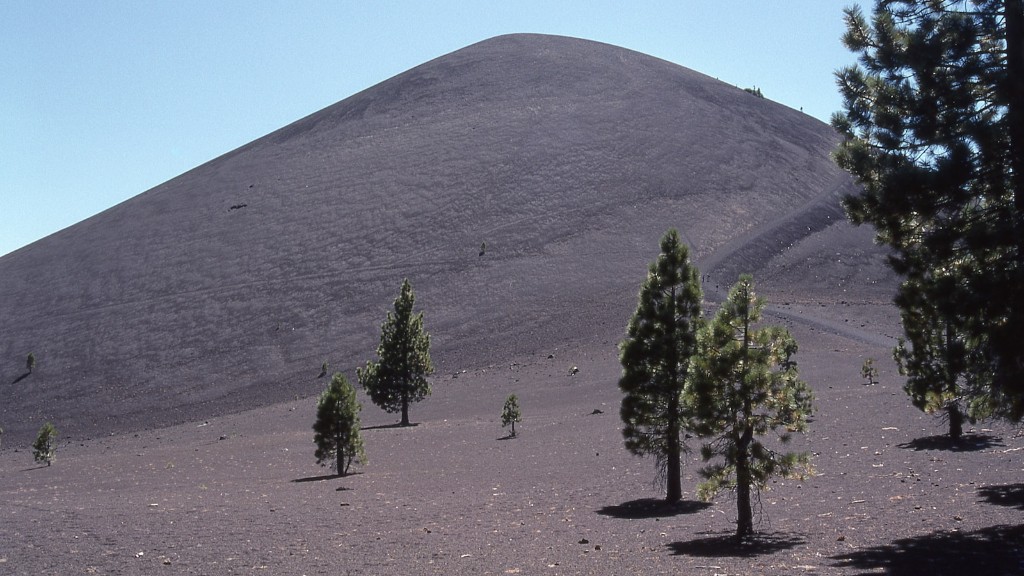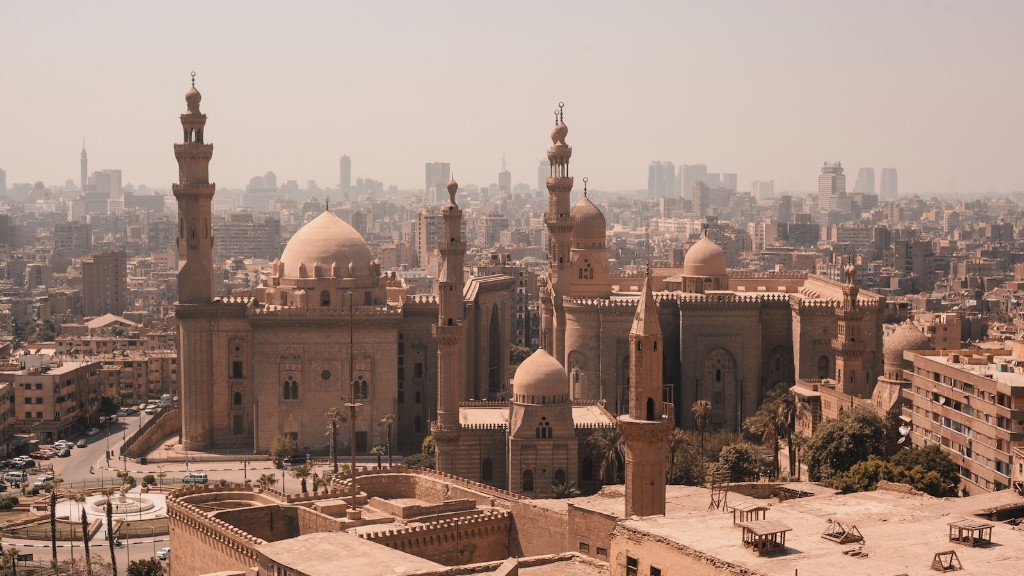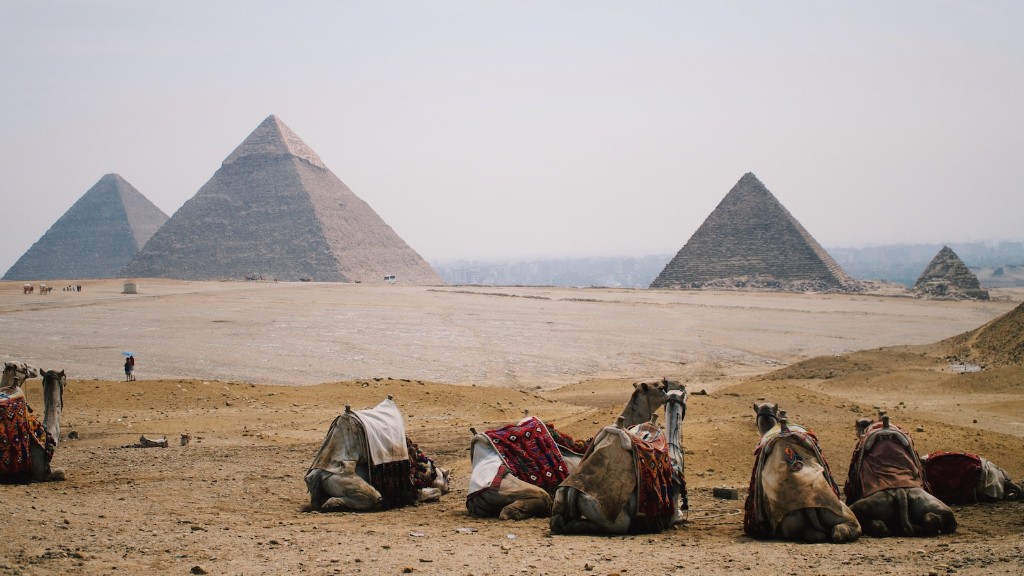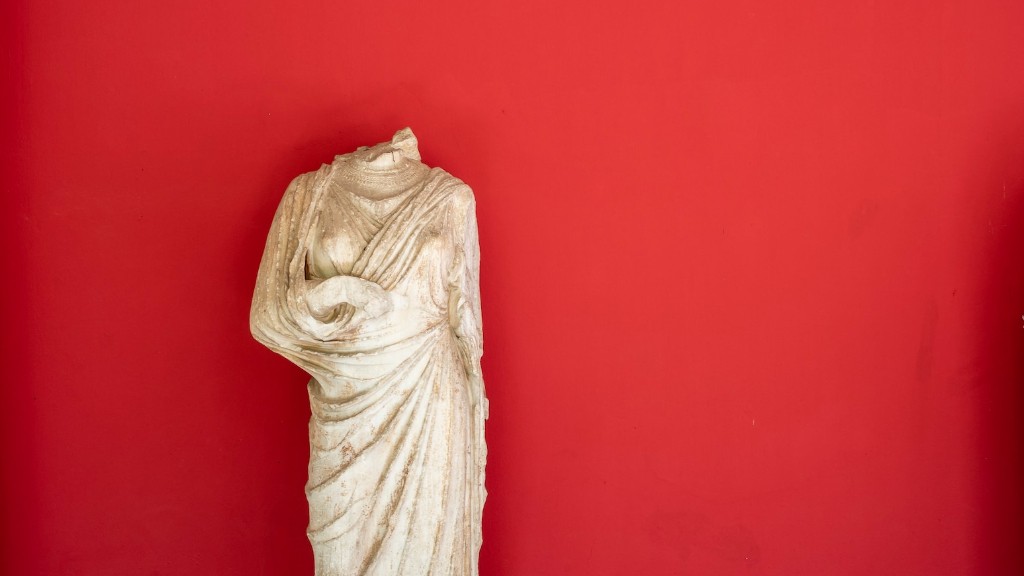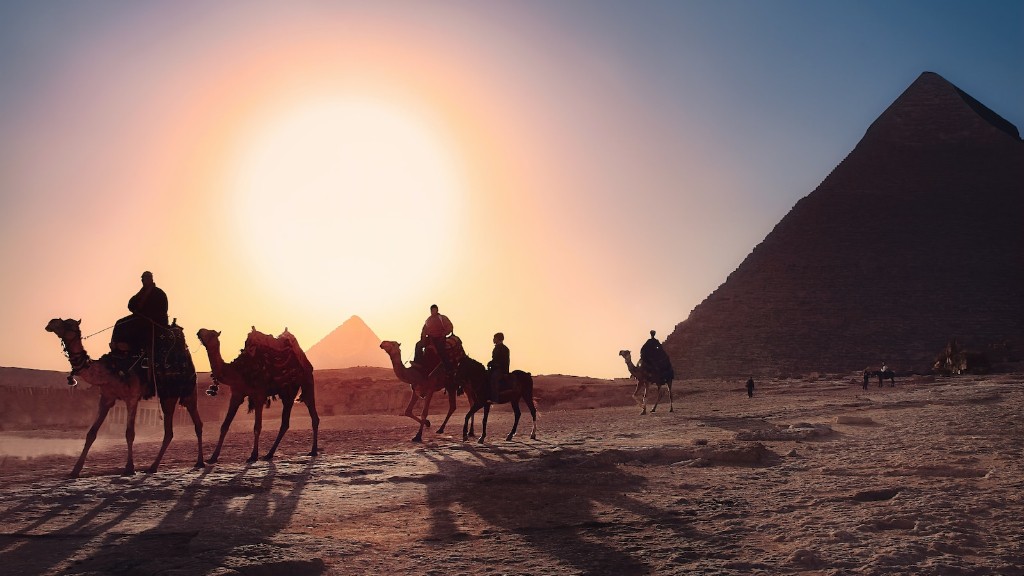Ancient Egypt is a place of mystery and intrigue, and the impact of its climate on its people is no exception. A major determinant of ancient Egypt’s climate was the location of Egypt – a narrow strip of land between the Mediterranean Sea and the vast desert. The river Nile was the source of life for the people of Egypt. Rainfall was highly irregular and inconsistent, leaving Egypt’s climate prone to droughts, floods, and violent storms which occur year after year.
In Ancient Egypt, climate was reflected in the way people used resources, managed their land, distributed wealth, built their cities, traded with other regions and interacted with the environment. Climate was so important to the Egyptian way of life because the availability of water directly related to their ability to farm and provide food for their people. For example, the length of the Nile’s inundation determined whether farmers had a good harvest, as they relied on the river to bring them enough moisture for their crops.
The Nile River was the lifeblood of Ancient Egypt, but its regular flooding also posed threats. During the wet season, flash floods could devastate people’s homes and crops. On the other hand, during the dry season, the Nile’s level can drop dramatically and cause water shortages. Without enough water, agriculture could come to a standstill. This is one reason why the Ancient Egyptians built irrigation systems to direct water from the Nile to their crops.
Egyptians also built dykes and dams along the Nile to help manage the annual flooding. Despite these efforts, however, extreme weather was still a major problem. Droughts were particularly devastating, as they resulted in famine and made it difficult for Ancient Egyptians to survive. During these periods of prolonged drought, people could not grow enough food to sustain their population, and many people died of starvation or disease.
Ancient Egyptians often made offerings to gods and goddesses to bring them water and fertility. They believed that the god Hapi, who was the deity of the Nile, could bring them bountiful harvests and prevent floods and drought. This is why the Ancient Egyptians made offerings to Hapi and placed images of him in their temples and private homes, in hopes of invoking his favor.
Overall, the climate in Ancient Egypt played an important role in the development of its civilization. The unpredictable nature of the weather meant that the Ancient Egyptians had to be resourceful and creative when it came to managing their resources and adapting to the environment. Understanding how the climate affected the people of Ancient Egypt can help us better understand their culture and way of life.
Flood and drought control
Droughts and floods were a way of life for Ancient Egyptians, and to manage both, they developed sophisticated water management systems. Their irrigation systems were essential for controlling floods, and they also built dykes and dams to help manage the water levels of the Nile. They also built an extensive network of canals to transport water to farms and cities to help them thrive during harsh weather conditions.
Ancient Egyptians also used natural land changes to their advantage during drought. They routinely flooded their fields in the dry season to minimize soil erosion. This allowed them to conserve soil and water, and maintain a level of soil fertility that would support crops in the long run.
The Ancient Egyptians also introduced a variety of technologies and techniques to increase their efficiency in managing floods and drought. For example, they developed a system of water clocks, which allowed them to measure the duration of water in canals and other water channels in order to better predict and manage the level of the Nile.
They also developed an efficient system of damming, which allowed them to regulate the flow of water in the Nile. In times of drought, they would use the dams to block the water, and in times of flood, they would open the dams to prevent flooding. This system of flood and drought control was essential for enabling the Ancient Egyptians to maintain a steady flow of water for their crops and other needs.
Overall, the Ancient Egyptians’ innovations in water management were essential for adapting to the changing climate and ensuring their own survival.
Agriculture
Climate played a major role in Ancient Egyptians’ agricultural practices. Since the Nile was their primary source of water, the Egyptians heavily relied on the river’s annual flooding to provide them with enough water for their crops. The length and frequency of the Nile’s flooding determined whether they would have adequate water for their crops or not.
The Egyptians also developed agricultural techniques for managing drought. They developed fallow farming systems, which allowed them to preserve moisture, control weeds, and prevent soil erosion during the dry season. They also practiced crop rotation, which was essential for maintaining soil fertility in the long run.
In times of drought, the Ancient Egyptians would also gather and hoard water in cisterns and mud jars, and later use it to irrigate their crops. They also developed techniques for catching and storing rainwater, such as collecting it in wadis, which are depressions in the ground, and using it for irrigation.
To fertilize their crops, Ancient Egyptians used animal manure and plant materials, which they collected and used as fertilizer. This allowed them to significantly improve their yields and increase their resilience to drought.
The Ancient Egyptians also developed advanced irrigation systems to help supply their crops with water during periods of drought. Their systems were highly effective in ensuring the maximum use of their scarce water supplies. By managing their available resources effectively, the Ancient Egyptians were able to maintain a steady supply of food during periods of drought.
Building
The Ancient Egyptians also used their climate and environment to their advantage when it came to building. They used mud bricks to build houses, temples, and palaces, and their mud bricks were highly resistant to the heat and dryness of the desert. They also developed advanced engineering techniques that allowed them to build their monuments, such as the pyramids, using mud bricks.
The Ancient Egyptians also used natural materials to construct their buildings. For example, they used the soft limestone that is abundant in Egypt to construct their statues and sculptures. They also used the hard granite and hard limestone that are native to the region for constructing their pillars and columns.
In addition, the Ancient Egyptians used their environment to provide heat and light for their buildings. They used Camelthorn, a species of shrub that can survive in extreme desert conditions, to provide firewood for their homes. They also used reed beds to filter water, and palm fronds to provide shade. The Egyptians were adept at using their climate and environment to their advantage when constructing their buildings.
Trade
The Ancient Egyptians’ climate also impacted their economy. Droughts and floods had a huge impact on the availability of trade goods. For instance, during periods of drought, trade routes could become impassable, as the Nile’s level dropped too low for ships to travel. This greatly disrupted trade, resulting in shortages of essential goods and reducing the availability of foreign goods.
On the other hand, during periods of heavy rain, the Nile’s level could rise too high, causing flooding and inundation. This could also reduce the availability of trade goods, as the flood waters made it difficult for ships to travel. The Ancient Egyptians had to constantly adjust their trade routes to accommodate the changing climate.
Floods and droughts also greatly affected the Ancient Egyptians’ agricultural production. During periods of drought, the availability of food decreased, and this often caused prices to soar. On the other hand, during periods of flood, the abundance of food often led to lower prices, which allowed the Ancient Egyptians to trade their extra goods for items from other regions.
Due to their inconsistent climate, the Ancient Egyptians had to find creative solutions to accommodate their weather-related trade disruptions. For instance, they developed an extensive trading network with bordering countries, which helped offset the costs of environmental disruptions for any individual country.
Technology
The Ancient Egyptians developed a variety of technologies to help them survive in their harsh environment and take advantage of their climate. They developed sophisticated irrigation systems that allowed them to make the most of their limited water supplies. They also developed advanced water clocks to measure the duration of water in canals, as well as a system of damming that allowed them to regulate the flow of the Nile.
The Ancient Egyptians also developed innovative agricultural techniques to help them manage drought, such as fallow farming and crop rotation. They also developed a variety of technologies for catching and storing rainwater, such as collecting it in wadis and using it for irrigation.
In addition, the Ancient Egyptians also developed a number of technologies to improve their building practices. For instance, they used mud bricks to construct their homes and monuments, and they also developed advanced engineering techniques to construct their pyramids. They also used natural materials, such as limestone and granite, to construct their pillars and columns.
Overall, the Ancient Egyptians’ technological advances enabled them to adapt to their climate and environment effectively, and enabled them to thrive in a harsh and unpredictable environment.
